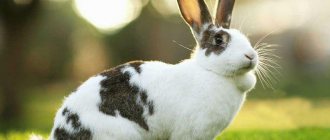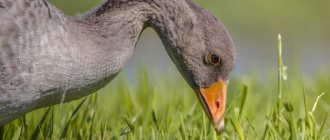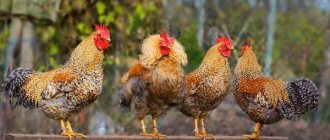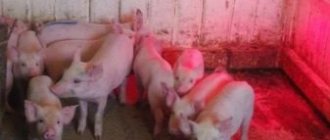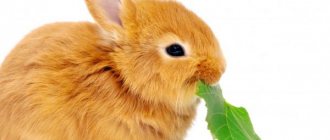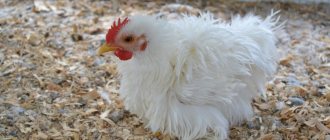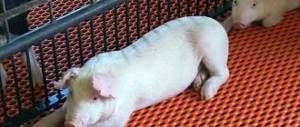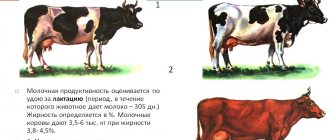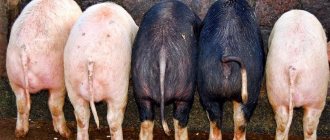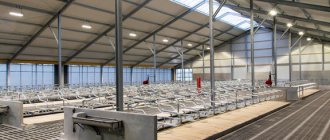Types of pigs
African brush-eared pig (Potamochoerus porcus)
This is the most colorful member of the pig family, it has red fur and often bathes in rivers and streams. The coloring and distinctive features of the subspecies of the animal are very different. The West African brush-eared pig is predominantly red with a white stripe along the back. Those pigs found in eastern and southern Africa are red, brown or black and sometimes darken with age.
Boars have elongated muzzles with two warts, which provide additional protection to the head during battles for dominance. The brush-eared pig runs quickly on land and, if necessary, also swims quickly.
Giant forest hog (Hylochoerus meiertzhageni)
This is the largest species of wild pig. Hogs weigh 50 kg more than females. The Eastern population also tends to be larger than the Western one. Males of western forest pigs weigh no more than 150 kg, males from the east gain 225 kg. Adults of both sexes are black or dark brown. Long but sparse hair covers the body. Down the midline of the back, long bristles (up to 17 cm) form a mane that rises when excited.
The muzzles of forest pigs are characteristic: the nasal disc is exceptionally large (up to 16 cm in diameter), and males have large swellings under the eyes. Both sexes have sharp fangs (females have much smaller ones). Males have canines with a slight upward curve, with a maximum recorded length of 35.9 cm.
Warthog (Phacochoerus africanus/aethiopicus)
Lives in pastures, and not in the forest, like other pigs. There are two species of warthogs: the common warthog (scientific name Phacochoerus africanus) and the desert warthog (Phacochoerus aethiopicus).
The most famous of these, the common warthog, is a species distributed in sub-Saharan Africa, including the Horn of Africa; the desert warthog is limited to the Horn of Africa. Until recently, zoologists did not distinguish between the two species of warthogs. As such, the distribution boundaries of these two species in the Horn of Africa remain poorly understood, as does the abundance status.
Babyrousa babyrussa or pig-deer
Lives on some islands in southeast Asia and is distinguished by upper canines that grow from the top of the mouth and curve back, possibly protecting the eyes from tree branches when the piglet runs through the forest. The animal uses its lower fangs against other babirussas in fights.
In the Americas, where pigs are not native, a related species of peccary (Tayassuidae) occupies the same ecological niche and resembles pigs in form and behavior.
Bearded pig (Sus barbatus)
They are large, long-legged pigs, with males only slightly larger than females. The body with sparse fur is usually pale gray in color. The coat color can also be reddish-brown or dark brown, depending on the habitat and individual conditions. The tail has a characteristic tuft consisting of two rows of bristly hairs. The muzzle is elongated, on the bridge of the nose and cheeks there is a “beard” of coarse, thick hairs. The beard is more pronounced in males, the hairs are up to 15 cm in length. The whitish color of the beard (sometimes yellow or silver) is set off by the dark skin between the beard, the nasal disc and around the eyes. Males have two pairs of warts on their faces, but they are small and hidden inside the beard; they are absent in females. Both sexes have sharp fangs, in males they reach 25 cm in length. The ears are small and pointed.
Wild boar (Sus scrofa)
The brownish coat is coarse and bristly, turning gray with age. The muzzle, cheeks and throat are covered with whitish fur. The back is rounded, the legs are relatively long, especially in the northern subspecies. Piglets are born with a pattern of light stripes along the body, which disappears between the second and sixth months. The color of an adult boar is formed at the age of one year. The wart-free head is long and pointed. The upper canines form tusks that curve upward. The lower canines are like razors, self-sharpening when rubbed against the upper canines. The tail is long with a tuft.
Pygmy pig (Sus salvanius)
The species is endemic to India and is restricted to Manas National Park in northwestern Assam. These are small pigs 20-30cm tall. This species lives in dense, high meadows. Pigs feed on roots, tubers, insects, rodents and small reptiles. They breed seasonally before the monsoons, giving birth to a litter of three to six piglets.
Domestic pig (Sus scrofa domesticus)
Among zoologists, its scientific name is Sus scrofa, although some authors call it S. domesticus, reserving S. scrofa for wild boars. Wild boars (Sus scrofa) are the wild ancestors of the domestic pig, which were domesticated about 10,000 years ago, possibly in China or the Middle East. Domestic pigs spread throughout Asia, Europe, the Middle East, North Africa and the Pacific Islands in ancient times. Pigs were introduced to southeastern North America from Europe by Hernando de Soto and other early Spanish explorers. The escaped pigs became feral and were used as food by the Native Americans.
Biological and economic characteristics of pigs
See also: Pig farming
Cooling off
Anatomy
Cultivated breeds have retained some biological features inherent in wild pigs - poor eyesight, acute hearing, a keen sense of smell, the ability to swim well; increased fertility, ability for rapid growth and fat deposition. Pigs have an elongated muzzle, with a short, movable proboscis ending in a bare, flat “snout”, which makes it possible to dig the ground in search of plant roots, worms and other plant and animal food. There are 44 teeth, including 4 highly developed fangs. The limbs are four-fingered. The udder has 10-16 teats arranged in 2 rows. The hair is sparse, coarse, mainly made of bristles, but pigs with abundant hair, for example, Hungarian Mangalitsa, are also raised. The stomach is simple, single-chamber. Animals are omnivores, eating plant and animal foods.
In some anatomical and physiological parameters, pigs are very close to humans, for this reason they are used for medical and research purposes.
Pigs have both apocrine[en] and merocrine glands[en], although the location of the latter is limited to the snout and nasal cavity[21][ clarify
].
However, pigs, like other hairless mammals [ source not specified 1232 days
] (such as elephants, rhinoceroses, mole rats), do not use sweat glands for cooling [22]. Compared to other mammals, pigs lose heat through their mucous membranes through frequent breathing. Neutral temperature for pigs is between 16 and 22 °C[23]. As outside temperatures rise, pigs shed excess heat by mud bathing, although mud bathing also serves other purposes such as sun protection, parasite control, and territory marking.
- Drawing of boar genitals
- Vagina, uterus and placenta of a sow, drawing
- Model of a sow in a sagittal section with internal organs
- Pig skeleton, drawing
- Congested mammary glands of a lactating sow
- Pig hooves
Reproduction
Boar Sow nursing piglets Grown-up piglets (gilts)
Mating of young sows
are allowed at 8-9 months of age, when they weigh 130-150 kg,
boars
- no younger than one year of age, when they weigh 180-200 kg. Sexual heat is repeated every 18-22 days.
For the normal functioning of the reproductive system of boars, a balanced diet of vitamins and minerals is of great importance. Deficiency of fat-soluble vitamins leads to disturbances in spermatogenesis and deterioration in sperm quality.[25]
Due to the relatively short gestation period (102-128 days[26]) and the short suckling period (from 26 to 60 days), a number of farms receive two farrows or more from each queen and raise more than 20 piglets per year. With proper feeding and good housing conditions, sows of modern factory breeds give 10-12, and sometimes even 14-16 piglets per farrowing. Leading pig breeders annually raise 22-24 piglets from each queen.
Feeding piglets
Like most other mammals, pig feeding is a complex behavior[27]. Feeding occurs every 50-60 minutes, and the piglets must stimulate the sow in a certain way so that the milk begins to flow. The sow must immediately after birth receive certain sensory sensations - hear the voices of piglets, smell milk or birth fluids, touch the stubble - in order to speed up the onset of lactation [28]. The piglets begin to fight for a place at the udder, then each of them begins to suck on their own teat, receiving a portion of milk at slow but regular intervals. Each portion of milk produced differs in frequency, tone and strength, thus alerting piglets to the passing stages of feeding[29]. The phase of fighting for the nipples and tugging at the udder lasts about one minute and ends with the start of milk flow. During the next phase, the piglets hold the teats in their mouths and suck, swallowing at a rate of approximately once per second, and milk flow increases for approximately 20 seconds. The maximum milk intake does not correlate with its consumption, but rather with the entry of oxytocin secreted by the pituitary gland into the circulatory system [30]. The next phase is the main process of milk release, lasting 10-20 seconds, when the piglets slightly move away from the udder and begin to suck, making rapid movements of the oral cavity at a speed of approximately 3 movements per second. Milk ejection occurs quickly, not so intensely, in quick bursts of 3-4 per series. Finally, the flow stops, after which the piglets may rush from teat to teat, trying to encourage continued flow. Their effect on the udder allows the sow to determine how hungry they are and regulate the amount of milk released in future feedings. The more intensively the piglets act on the udder and teats after feeding, the greater the milk output will occur next time[31].
In pigs, a dominance hierarchy can be formed from a very early age. Domestic pigs develop very quickly and within minutes after birth, and sometimes faster, they begin to make attempts to suckle. Piglets are born with sharp teeth and begin to fight for space at the udder, trying to take place at the front teats, as they produce more milk. Once established, the order of placement of piglets during feeding remains stable, and each of the piglets occupies a very specific place near the udder and is fed from a specific teat (or group of teats) [32]. Stimulation of the anterior teats has been found to be very important in promoting milk production[33], so activating the anterior teats in the healthiest and most active piglets is important for the overall litter. The use of an artificial sow to feed piglets has shown that recognition of “one’s” nipple occurs first with the help of visual cues, and then, more precisely, the desired nipple is determined using the sense of smell[34].
Optimal natural feeding of suckling piglets by a sow is 35-42 days[35].
Productivity
With appropriate feeding and maintenance, pigs by 6-7 months of age reach a weight of 100-110 kg or more and, at slaughter, produce a carcass weighing 73-75 kg. The best pig farms with a population of 2-6 thousand queens receive from each of them annually an average of 15-20 quintals or more of pork, and from individual animals - much more.
Thanks to the high fertility and precocity of pigs, as well as their ability to give birth at a young age, it is possible to annually painlessly sell for meat more than 100-150% of the animals on the farm at the beginning of the year. Thanks to the same biological characteristics of pigs, pig farming creates ample opportunities for quickly improving the herd by replacing less productive animals with more productive ones that produce products that meet changing requirements (in particular, the transition to breeding animals that produce less fatty pork).
The slaughter yield depends on the breed, age, sex, degree of fatness of the animal, as well as on the amount of losses when cutting the carcass. When slaughtering 90-100 kg pigs, it usually ranges between 72-75%, for animals slaughtered weighing 120-140 kg - about 75-77%, and for well-fed adult pigs - within 80-85%.
Meat value
Book cover covered with pigskin, 1894
Main article: Pork
Pork is one of the main types of meat in many countries around the world. In appearance, pig meat is pale pink in color and contains noticeable layers of fat. In terms of taste, pork is softer and fattier than beef and lamb. The meat usually consumed is female pigs, or (less commonly) hogs
, castrated before the onset of puberty. The meat of boars is also edible, but it has significantly worse taste.
Morbidity
Pigs, like other domestic and wild animals, are susceptible to diseases. A special place among them is occupied by infectious diseases, which can spread quickly and affect entire livestock, and some zooanthroponoses are also dangerous for humans (for example, anthrax, rabies, etc.). Among the zoonoses we can note: classical swine fever, African swine fever, canine fever, Aujeszky's disease, Teschen disease[en], porcine circovirus diseases[en], porcine reproductive and respiratory syndrome[en], swine flu, actinobacillus pleuropneumonia of pigs[en] , pasteurellosis, swine erysipelas, swine streptococcosis, swine salmonellosis, swine ascariasis, metastrongylosis, etc.[36][37]. Through insufficiently processed pork, a person can become infected with certain parasitoses (cysticercosis, echinococcosis, trichinosis, etc.).
Pig diet
Unlike most other ungulate mammals, pigs do not have multi-chambered ruminant stomachs and will not survive on leaves and grasses alone. Pigs are omnivores, which means they eat plants and animals. They eat a variety of foods including:
- acorns;
- seeds;
- green vegetation;
- roots;
- tubers;
- mushrooms;
- fruits;
- carrion;
- eggs;
- insects;
- small animals.
Sometimes, during periods of food shortage, a mother pig eats her own babies.
Pigs are social animals
In the wild, female pigs and their young live in an extended family group called a herd (adult males are usually solitary.) Sonar members communicate with each other through sight, sound, and smell, cooperate in finding food, and watch for and fight off predators .
Why pigs love dirt
Pigs do not have sweat glands, so in hot weather they cool their bodies with water or mud. They also use mud as a sunscreen, which protects their skin from sunburn. Mud protects against flies and parasites.
Harm and benefits for the environment
These animals benefit the forest communities in which they live:
- eat dead animals;
- control the number of insect pests for trees;
- lift the soil with their noses and fangs, which promotes plant growth;
- spread seeds and spores of fungi, including truffles.
On the other hand, feral pigs (domesticated pigs released into the wild) act as agricultural pests and cause environmental damage. For example, pigs brought to Australia:
- destroy the habitat of native plants and animals;
- promote the proliferation of weeds;
- destroy pastures and agricultural crops;
- They cause damage to the environment and dig through the ground with their noses in search of food.
Why do people use pigs?
Pigs searched for truffles, herded sheep, served as game for hunters, performed in circuses and starred in films. Anatomical similarities to humans are used in medical experiments. Pig heart valves are transplanted into human hearts, pig livers have saved human lives, they have been transplanted into liver tissues of people suffering from acute liver failure, a process called “perfusion.”
Pigs are not only food for people, but also pets
Pigs are known to be intelligent animals, and zoologists have discovered that they are more trainable than dogs or cats. Asian Vietnamese pigs, a small breed of domestic pig, have become popular family pets. Previously, conventional domestic pigs were kept indoors. People stopped keeping pigs indoors due to their large size and destructive behavior. Young piglets are brought into a warm house in winter if the barn is too cold. But, as a rule, they are moved to a pen as they grow older.
The benefits of pigs in the household
It is worth noting that a pig is a fairly large animal, the weight of which can range from 45 to 400 kilograms depending on the breed. As a rule, mammals are raised for one purpose - meat. In this matter they simply have no equal. Enormous fertility along with large weight allows for excellent productivity even for a developing farm.
As for the wild, some pigs also live in such conditions. The average lifespan of such animals can be from 7 to 8 years, which is twice as long as that of domestic varieties. Females behave quite aggressively, trying to protect their offspring. But the domestic counterparts of wild sows are more calm in this matter and allow the person to do whatever he wants with the piglets.
Impact of pigs on the environment
Large wild pig populations in the Americas, Australia, New Zealand, Hawaii and other areas where pigs are not native animals have given rise to:
- domestic pigs that have escaped into the wild or that have been allowed to feed in the wild;
- wild boars, which were introduced as prey for hunting.
Feral pigs, like other translocated mammals, are major drivers of extinction and ecosystem change. They have been introduced to many areas of the world and damage crops and home gardens and spread diseases. Pigs plow up large areas of land, destroy native vegetation and spread weeds. This:
- changes the habitat;
- stimulates vegetation succession;
- reduces the fauna native to the region.
Parasites transmitted to humans
| Check information. It is necessary to check the accuracy of the facts and reliability of the information presented in this article. There should be an explanation on the talk page. |
The pig's ancestor, the wild boar, is a scavenger, so the meat of pigs and wild boars is infested with parasites. Among the incomplete list of parasites transmitted from pigs to people, one can name trichinosis, various types of helminthiases - enterobiasis, hookworm, trichuriasis. Insufficiently processed pig meat has become and is currently becoming the cause of many parasitic and infectious diseases. According to the book by N.I. Danikov “Cleansing from parasites” [ unauthorized source? 1764 days
], pig meat must be cooked for at least 4-6 hours to kill parasites. Technologies for the industrial preparation of sausage, and especially kebabs, in most cases do not meet these requirements [5].

